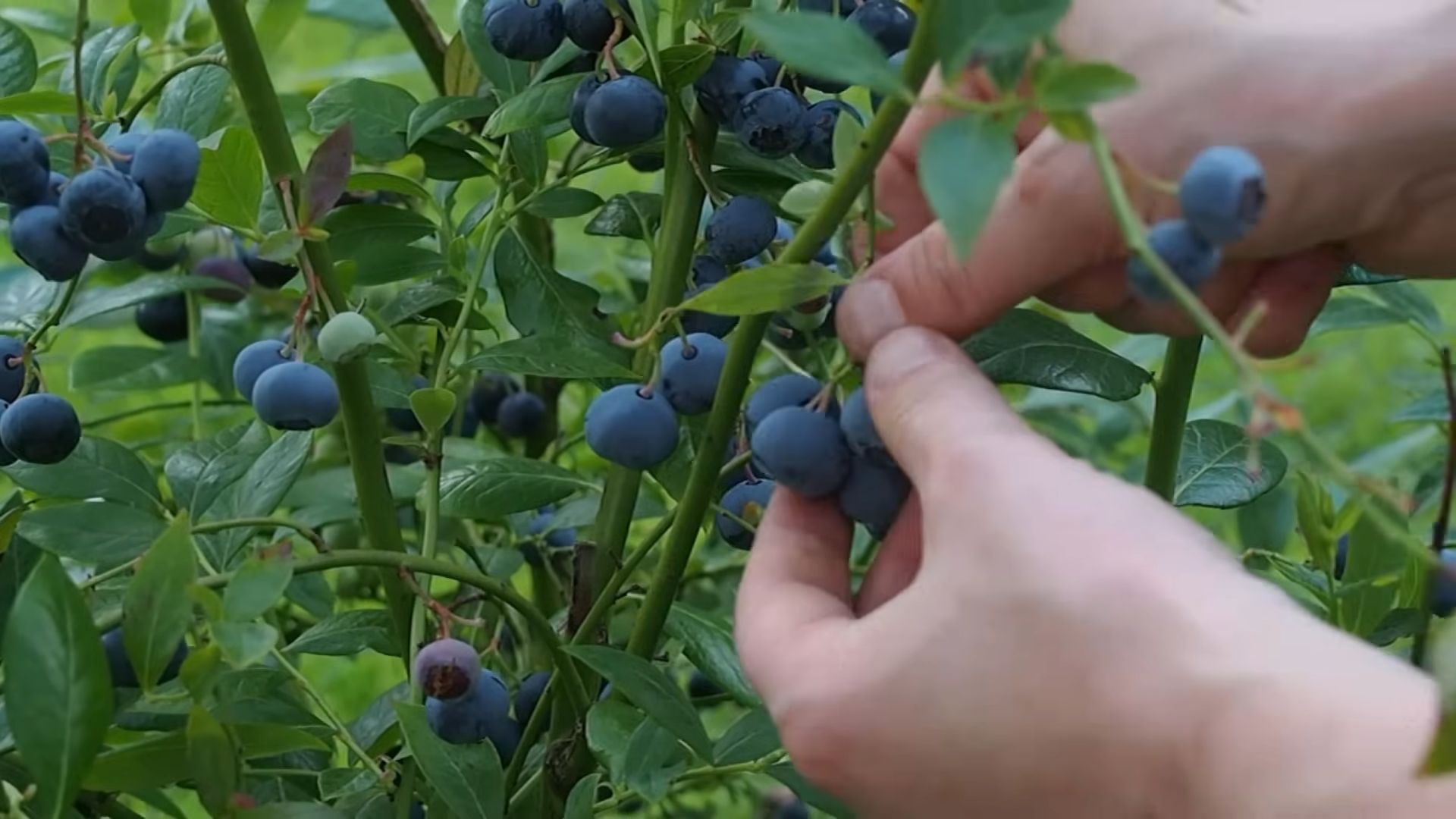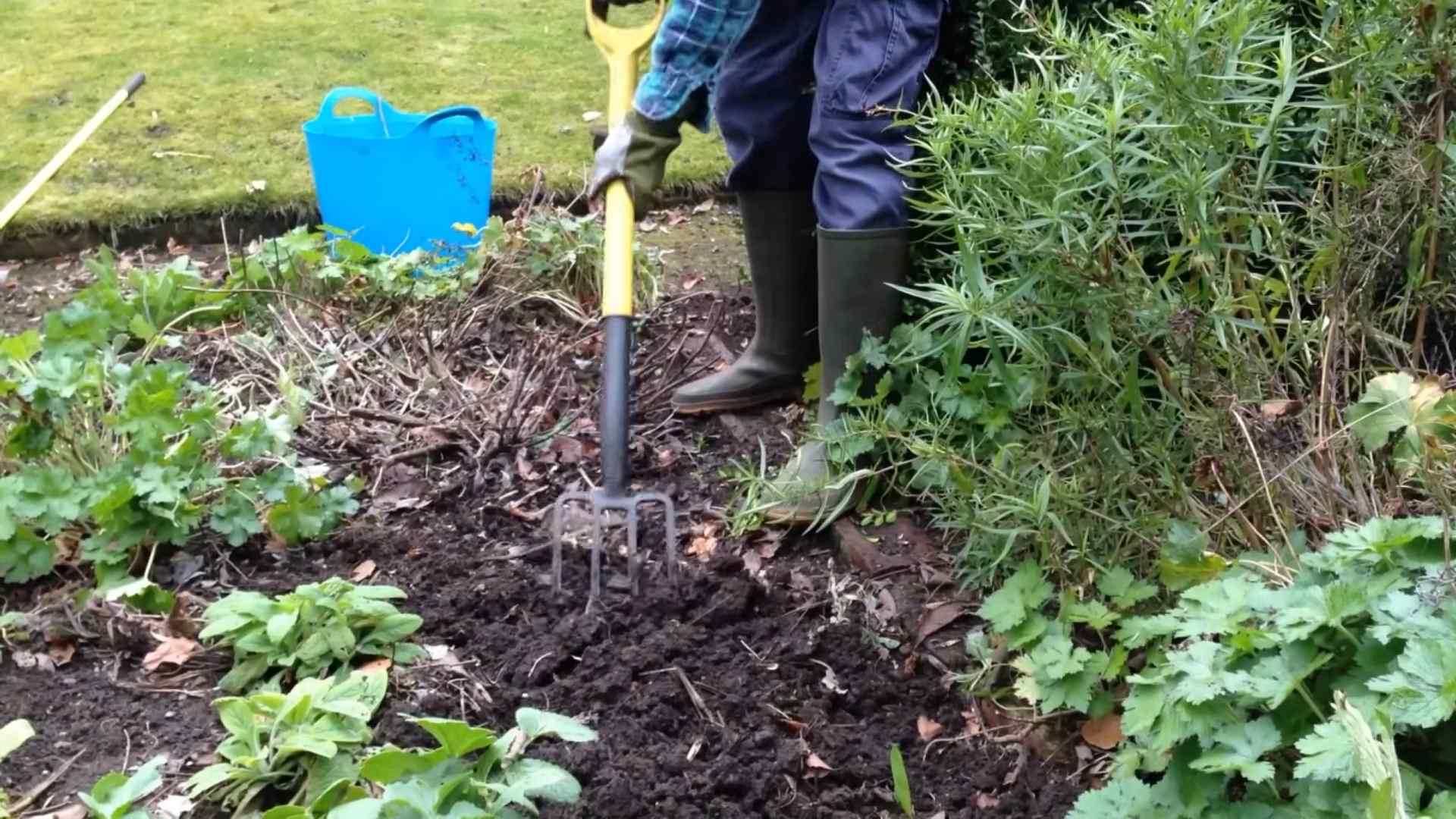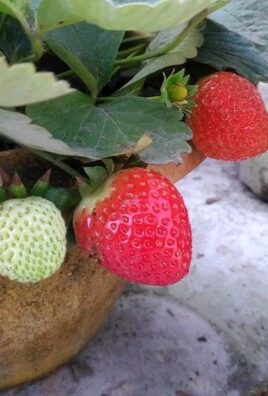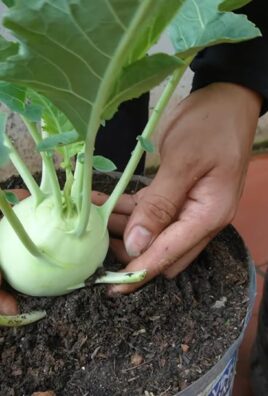Growing Blueberries at Home can seem like a daunting task, conjuring images of sprawling farms and specialized equipment. But what if I told you that cultivating these antioxidant-rich berries in your own backyard is not only achievable but also incredibly rewarding? For centuries, blueberries have been cherished, not just for their delicious taste but also for their purported health benefits. Native American tribes revered them, using them in traditional medicines and culinary practices.
Today, we’re bringing this tradition to your doorstep with simple, DIY tricks and hacks that will transform your garden into a blueberry haven. Forget expensive store-bought berries; imagine stepping outside and picking your own juicy, sun-ripened blueberries whenever you please! This article is your comprehensive guide to successfully growing blueberries at home, even if you’re a complete beginner. We’ll cover everything from soil preparation and choosing the right varieties to pest control and harvesting techniques.
Why do you need these DIY tricks? Because blueberries are notoriously picky about their environment. They require acidic soil, specific watering schedules, and protection from certain pests. Without the right knowledge, your blueberry dreams could quickly turn sour. But fear not! With these easy-to-follow tips, you’ll be well on your way to enjoying a bountiful blueberry harvest year after year. Let’s get started!

Growing Blueberries at Home: A DIY Guide to Berry Bliss
Okay, so you want to grow blueberries at home? Awesome! I’m here to tell you it’s totally doable, and the reward of fresh, juicy blueberries right from your backyard is absolutely worth the effort. It might seem intimidating at first, but trust me, with a little planning and some elbow grease, you’ll be picking your own blueberries in no time. Let’s dive in!
Choosing the Right Blueberry Variety
Before you even think about digging a hole, you need to pick the right blueberry variety for your climate. Blueberries are generally categorized into three main types:
* Highbush: These are the most common type and are further divided into Northern Highbush (hardy in colder climates) and Southern Highbush (better suited for warmer regions).
* Lowbush: These are smaller, wild blueberries that are extremely cold-hardy.
* Rabbiteye: These are native to the southeastern United States and are known for their vigorous growth and tolerance of warmer temperatures.
How to choose:
* Check your USDA Plant Hardiness Zone: This will tell you which varieties are likely to thrive in your area. You can easily find your zone online by searching “USDA Plant Hardiness Zone Map.”
* Consider chill hours: Chill hours are the number of hours below 45°F (7°C) that a blueberry plant needs to properly set fruit. Different varieties have different chill hour requirements. Your local nursery can help you determine which varieties are best suited for your area’s chill hour accumulation.
* Think about size: Highbush varieties can grow quite large (5-8 feet tall), while lowbush varieties stay much smaller (1-2 feet tall). Rabbiteye varieties can be even larger! Consider how much space you have available.
* Pollination: Most blueberry varieties are self-pollinating, but you’ll get a much better yield if you plant at least two different varieties that bloom at the same time. This encourages cross-pollination, resulting in larger and more abundant berries.
Once you’ve done your research and chosen the right variety (or varieties!), you’re ready to move on to the next step.
Preparing the Soil: Acidity is Key!
Blueberries are acid-loving plants, meaning they need a soil pH of between 4.5 and 5.5 to thrive. This is probably the most crucial aspect of growing blueberries successfully. Most garden soils are not acidic enough, so you’ll need to amend the soil to create the right environment.
Here’s what you’ll need:
* Soil testing kit: You can buy these at most garden centers. It’s essential to know your soil’s current pH before you start amending it.
* Sphagnum peat moss: This is a great way to add acidity to the soil.
* Elemental sulfur: This is another effective way to lower the soil pH. It takes time to work, so it’s best to apply it several months before planting.
* Composted pine bark: This helps improve drainage and adds organic matter to the soil.
* Organic fertilizer for acid-loving plants: Look for a fertilizer specifically formulated for blueberries or other acid-loving plants like azaleas and rhododendrons.
Step-by-step soil preparation:
1. Test your soil: Follow the instructions on your soil testing kit to determine your soil’s pH.
2. Amend the soil: Based on your soil test results, you’ll need to amend the soil to lower the pH. Here’s a general guideline, but always adjust based on your specific soil conditions:
* For each blueberry plant, dig a hole that’s about 2 feet wide and 1 foot deep.
* Mix equal parts of your existing soil, sphagnum peat moss, and composted pine bark.
* If your soil pH is significantly higher than 5.5, incorporate elemental sulfur into the soil mixture. Follow the instructions on the sulfur packaging for application rates. It usually takes several months for the sulfur to lower the pH, so plan accordingly.
3. Re-test the soil: After amending the soil, wait a few weeks and re-test the pH to make sure it’s in the desired range (4.5-5.5). If it’s still too high, add more sphagnum peat moss or elemental sulfur.
Planting Your Blueberry Bushes
Now that your soil is prepped and ready, it’s time to plant your blueberry bushes!
What you’ll need:
* Your blueberry bushes (of course!)
* Watering can or hose
* Mulch (pine straw, wood chips, or shredded bark)
Planting instructions:
1. Soak the roots: Before planting, soak the roots of your blueberry bushes in water for about 30 minutes. This will help them rehydrate and get off to a good start.
2. Dig the hole: Dig a hole that’s slightly larger than the root ball of your blueberry bush.
3. Plant the bush: Gently remove the blueberry bush from its container and loosen the roots. Place the bush in the hole, making sure the top of the root ball is level with the surrounding soil.
4. Fill the hole: Fill the hole with the amended soil mixture you prepared earlier. Gently pat down the soil around the base of the plant.
5. Water thoroughly: Water the newly planted blueberry bush thoroughly to help settle the soil and hydrate the roots.
6. Mulch: Apply a 2-3 inch layer of mulch around the base of the plant. This will help retain moisture, suppress weeds, and regulate soil temperature. Be sure to keep the mulch a few inches away from the stem of the plant to prevent rot.
Caring for Your Blueberry Plants
Once your blueberry bushes are planted, it’s important to provide them with the proper care to ensure they thrive and produce a bountiful harvest.
Watering:
Blueberries need consistent moisture, especially during the growing season. Water deeply and regularly, especially during dry spells. Aim to keep the soil consistently moist but not waterlogged. A good rule of thumb is to water when the top inch of soil feels dry to the touch.
Fertilizing:
Blueberries need regular fertilization to stay healthy and productive. Use an organic fertilizer specifically formulated for acid-loving plants. Fertilize in early spring, just before the new growth begins, and again in late spring or early summer. Follow the instructions on the fertilizer packaging for application rates.
Pruning:
Pruning is essential for maintaining the health and productivity of your blueberry bushes. Prune in late winter or early spring, before the new growth begins.
* First 3 years: Focus on removing any dead, damaged, or crossing branches. Also, remove any low-growing branches that are touching the ground.
* After 3 years: In addition to removing dead, damaged, and crossing branches, you’ll also want to remove some of the older, less productive canes. This will encourage new growth and improve air circulation. Aim to remove about one-third of the oldest canes each year.
Pest and Disease Control:
Blueberries are generally relatively pest and disease-resistant, but they can be susceptible to certain problems.
* Birds: Birds love blueberries just as much as we do! To protect your berries, you can cover your bushes with netting.
* Blueberry Maggot: This is a common pest that can damage your berries. You can control blueberry maggot with insecticides or by using traps.
* Fungal Diseases: Blueberries can be susceptible to fungal diseases like powdery mildew and anthracnose. To prevent these diseases, ensure good air circulation around your plants and avoid overhead watering. If you do notice signs of fungal disease, treat with a fungicide.
Harvesting Your Blueberries
The moment you’ve been waiting for! Harvesting your own blueberries is one of the most rewarding parts of growing them.
When to harvest:
Blueberries are typically ready to harvest in mid-summer, but the exact timing will depend on the variety and your climate. The berries should be a deep blue color and should easily detach from the stem when gently tugged.
How to harvest:
Gently pick the ripe blueberries from the bush. Avoid pulling or yanking on the berries, as this can damage the plant. Store the harvested blueberries in the refrigerator.
Enjoy your harvest!
Now that you’ve harvested your own blueberries, it’s time to enjoy them! Eat them fresh, bake them into pies or muffins, or freeze them for later. The possibilities are endless!
Growing blueberries at home takes a little effort, but it’s definitely worth it. With a little planning and care, you can enjoy a bountiful harvest of fresh, juicy blueberries right from your own backyard. Happy gardening!

Conclusion
So, there you have it! Growing blueberries at home is not only achievable, but it’s also incredibly rewarding. Imagine stepping out into your garden and harvesting plump, juicy blueberries, bursting with flavor and packed with antioxidants. Forget those expensive, often lackluster berries from the grocery store. With a little preparation and the right conditions, you can enjoy a continuous supply of fresh, homegrown blueberries all season long.
This DIY approach to growing blueberries offers a multitude of benefits. You have complete control over the growing environment, ensuring your berries are free from harmful pesticides and herbicides. Plus, the satisfaction of nurturing your own plants from start to finish is unparalleled. The vibrant green foliage and delicate white blossoms of blueberry bushes also add a touch of beauty to any garden.
But the real magic lies in the taste. Homegrown blueberries are simply superior in flavor. They’re sweeter, more intense, and have a texture that store-bought berries can only dream of. Think of the delicious pies, muffins, smoothies, and jams you can create with your own homegrown bounty!
Don’t be afraid to experiment with different varieties of blueberries to find your favorites. Consider planting a mix of early, mid, and late-season varieties to extend your harvest. For example, ‘Duke’ is a popular early-season choice, while ‘Bluecrop’ is a reliable mid-season producer, and ‘Elliott’ ripens later in the season. You can also explore different bush sizes, from compact dwarf varieties perfect for containers to larger, more productive bushes for in-ground planting.
Another variation to consider is the soil amendment strategy. While we’ve emphasized the importance of acidic soil, you can further enhance the soil’s nutrient content by incorporating organic matter like composted pine bark or leaf mold. This will improve drainage, aeration, and overall soil health, leading to even healthier and more productive blueberry bushes.
Growing blueberries in containers is a fantastic option for those with limited space or alkaline soil. Just be sure to choose a large container with drainage holes and use an acidic potting mix specifically formulated for acid-loving plants. Regular watering and fertilization are crucial for container-grown blueberries, as the soil tends to dry out more quickly.
This DIY trick is a must-try because it empowers you to grow your own healthy, delicious, and sustainable food. It’s a project that connects you with nature, provides a sense of accomplishment, and rewards you with a bounty of flavorful blueberries.
We encourage you to take the plunge and start growing blueberries at home today! Don’t be intimidated by the perceived challenges. With a little research and effort, you can create a thriving blueberry patch that will provide you with years of enjoyment.
And most importantly, we want to hear about your experience! Share your tips, successes, and challenges in the comments below. Let’s build a community of blueberry enthusiasts and learn from each other. What varieties are you growing? What soil amendments have you found most effective? What delicious recipes have you created with your homegrown blueberries? Your insights will help others embark on their own blueberry-growing journey. Happy growing!
Frequently Asked Questions (FAQ)
What type of soil is best for growing blueberries?
Blueberries are acid-loving plants, meaning they thrive in soil with a pH between 4.5 and 5.5. Most garden soils are not naturally acidic enough for blueberries, so you’ll need to amend the soil to lower the pH. You can do this by incorporating sulfur, peat moss, or an acidic soil amendment specifically designed for blueberries. A soil test is highly recommended to determine your soil’s current pH and nutrient levels. You can purchase a soil testing kit at most garden centers or send a sample to a professional soil testing lab. Remember, consistently acidic soil is the cornerstone of successful blueberry cultivation.
How often should I water my blueberry bushes?
Blueberries need consistent moisture, especially during the growing season. Water deeply and regularly, aiming to keep the soil consistently moist but not waterlogged. The frequency of watering will depend on factors such as the weather, soil type, and the size of your plants. Check the soil moisture regularly by sticking your finger a few inches into the soil. If the soil feels dry to the touch, it’s time to water. During hot, dry weather, you may need to water daily. Mulching around your blueberry bushes with pine straw or wood chips can help retain moisture and suppress weeds. Overwatering can be just as harmful as underwatering, so ensure your soil has good drainage.
When is the best time to plant blueberry bushes?
The best time to plant blueberry bushes is in the early spring or late fall, when the plants are dormant. This gives them time to establish their root systems before the heat of summer or the cold of winter. If you live in a region with mild winters, fall planting is often preferred, as it allows the plants to get a head start on growth in the spring. When planting, dig a hole that is twice as wide as the root ball and just as deep. Gently loosen the roots before placing the plant in the hole. Backfill with amended soil and water thoroughly.
What kind of fertilizer should I use for blueberries?
Use a fertilizer specifically formulated for acid-loving plants, such as azalea or rhododendron fertilizer. These fertilizers contain ammonium sulfate, which helps to lower the soil pH and provide the nutrients that blueberries need. Fertilize in the early spring, just before new growth begins. Follow the instructions on the fertilizer package carefully, as over-fertilizing can damage your plants. Avoid using fertilizers that contain nitrates, as these can raise the soil pH. Organic options like composted manure or blood meal can also be used, but be sure to monitor the soil pH regularly.
How do I protect my blueberries from birds?
Birds love blueberries just as much as we do! To protect your harvest, you’ll need to take steps to deter them. The most effective method is to cover your blueberry bushes with netting. Be sure to choose a netting with small enough holes to prevent birds from getting through. Drape the netting over the bushes and secure it to the ground to prevent birds from getting underneath. Other methods include using bird scare tape, reflective streamers, or ultrasonic bird repellers. However, these methods are often less effective than netting.
How do I prune my blueberry bushes?
Pruning is essential for maintaining the health and productivity of your blueberry bushes. Prune in late winter or early spring, before new growth begins. Remove any dead, damaged, or crossing branches. Also, remove some of the older, less productive canes to encourage new growth. Aim to create an open, airy structure that allows sunlight to penetrate the center of the bush. Young blueberry bushes require minimal pruning, but as they mature, more extensive pruning will be necessary. Consult a pruning guide specific to your blueberry variety for detailed instructions.
What are some common blueberry pests and diseases?
Blueberries can be susceptible to various pests and diseases, including aphids, spider mites, blueberry maggot, and fungal diseases like powdery mildew and botrytis blight. Regularly inspect your plants for signs of pests or diseases. If you notice any problems, take action promptly. Insecticidal soap or horticultural oil can be used to control aphids and spider mites. Fungicides can be used to treat fungal diseases. Proper sanitation, such as removing fallen leaves and debris, can help prevent the spread of diseases. Choose disease-resistant blueberry varieties whenever possible.
Can I grow blueberries in containers?
Yes, growing blueberries in containers is a great option for those with limited space or alkaline soil. Choose a large container with drainage holes and use an acidic potting mix specifically formulated for acid-loving plants. Regular watering and fertilization are crucial for container-grown blueberries, as the soil tends to dry out more quickly. Container-grown blueberries may also need to be protected from extreme temperatures during the winter. Consider moving them to a sheltered location or wrapping the containers with insulation.
How long does it take for blueberry bushes to produce fruit?
Most blueberry bushes will start producing fruit within one to two years of planting, but it may take three to five years for them to reach full production. The amount of fruit produced will depend on the variety, age, and health of the plant. Proper care, including adequate watering, fertilization, and pruning, will help to maximize fruit production. Be patient and persistent, and you’ll be rewarded with a bountiful harvest of delicious blueberries.
What are the health benefits of eating blueberries?
Blueberries are packed with antioxidants, which help to protect your body against damage from free radicals. They are also a good source of vitamins C and K, as well as fiber. Studies have shown that blueberries may help to improve brain function, lower blood pressure, and reduce the risk of heart disease and cancer. Enjoying a handful of blueberries every day is a delicious and healthy way to boost your overall well-being.





Leave a Comment